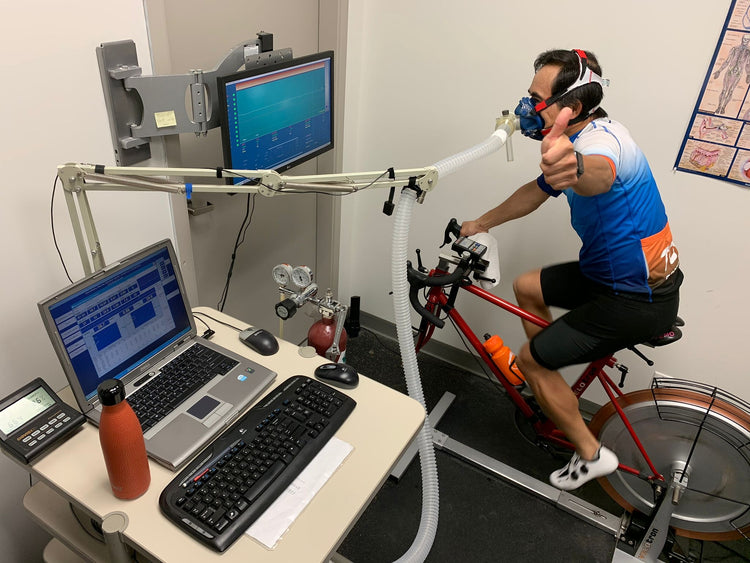Changing your Metabolism by Zone 2 - LT1 training
We have a couple recent case studies demonstrating changes in metabolism through dedicated aerobic training. This means training at low heart rates on a regular basis. High intensity intervals were not prescribed for these clients.
Case Study One
Subject: Female Cyclist, 51 years
Assessment: Pre and Post Blood Lactate testing
Goal: The comeback! Prepare for a spring MTB event and getting back into previous fitness form.
Training: 8 weeks of Zone 1-2 (LT1) training, 3-4X per week, 45-60 min. No intensity.

The second bar for each power at workloads from 100-140W has less lactate production. These were the athlete’s aerobic training zones also known as lactate threshold 1 (LT1). A 20-minute warm-up was used at 120W prior to starting the actual test at 100W. After 8 weeks of training, the cyclist produced less lactate at each power output. Less lactate production is the result of increased fat burning and less glucose use for exercise. This is the ideal outcome and a measure of improved cardiovascular efficiency.
Case Study Two
Subject: Male Cyclist, 43 years
Assessment: Pre and Post VO2 testing
Goal: Get healthy. Lose some weight and re-start a fitness plan.
Training: 8 weeks of Zone 1-2 (LT1) training, 4-5X per week, 45-60 min. No intensity.

Another method of measuring change in metabolism is looking at respiratory expirations through a VO2 test. When our bodies use less CO2, this is direct sign of increased fat utilization. The athlete in this case did not burn well on his baseline test even at low relative power outputs. We prescribed 8 weeks of Zone 1-2 training. On the second test, fat burning changed significantly in a good way. His body started to use its big energy source (fat) instead of glucose and he lost over 3 kg. Intensity intervals were not prescribed, just easy aerobic workouts. This change in metabolism is another way of stating that his “aerobic base” has been established.
Take Home Message
The changes in your metabolism and improvement in fat burning can be done without doing intense workouts. Unfortunately, this has been the approach to starting fitness plans over many years. Coaches and trainers have been reluctant to prescribe just aerobic training and lower heart rates. Some of this stems from the belief that you “need to go hard” in order to improve. This mentally often results in poor exercise adherence and burnout whether you are an experienced athlete or someone just getting back into shape.
In order to train smarter, you need to know what is going on with your metabolism. Are you a good fat burner? Do you rely too much on glucose? Do you have an aerobic base? Getting fit does not have to include a weekly torture session! Training should be prescribed on an individual basis with the goal of longevity. Build a training plan that has a long-term outlook that is sustainable even in our busy lives. It is always rewarding to see clients smile when they see an improvement in their metabolism and a decrease in body weight by training smart. Take some time and think about your exercise over 12 months. Determine the status of your metabolism and then a set-up a plan to become an aerobic machine!









